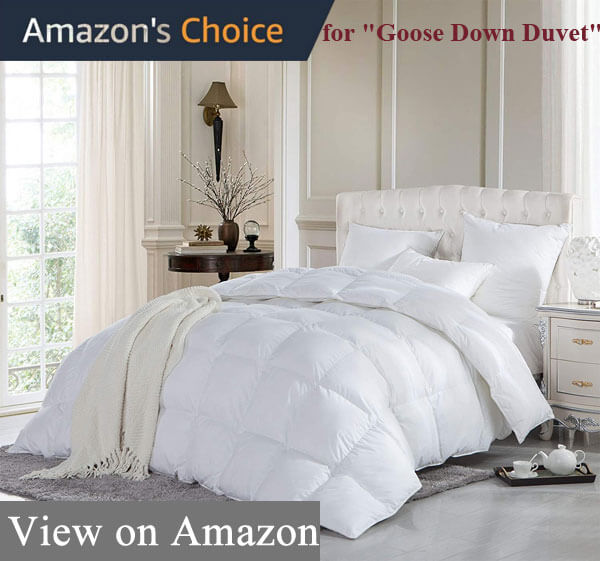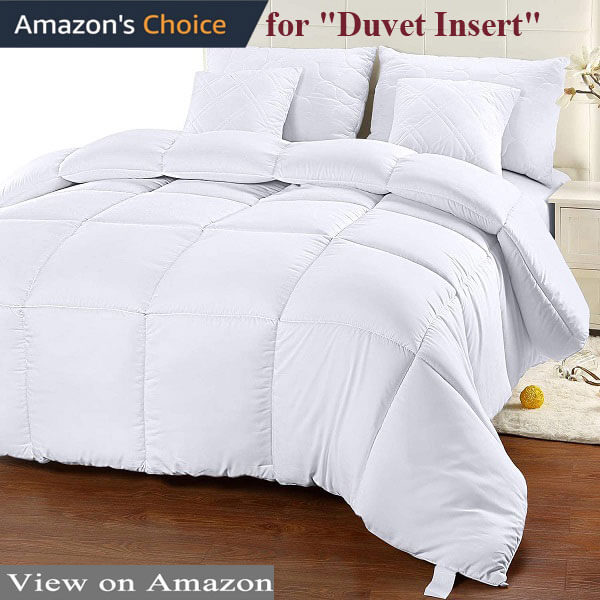When it comes to the autumn and winter seasons you have to purchase a comforter, it gets a bit confusing to choose between the down comforters and down alternative comforters. It’s good to first understand the difference, advantages, and disadvantages of each before considering to buy.
A down comforter consists of a light and insulating substance that is made from materials found under a bird’s feather. This is usually harvested from ducks or geese. Well known to keep the birds warm during cold temperatures, this condition makes it extremely important to fill in comforters to provide and maintain sufficient warmth.
The natural feather down comforter quality is measured by fill power. Fill power is the measure of how many cubic inches that synthetic material expands to. The higher the fill power, the better the insulation quality.
Down Comforters Pros & Cons
Pros
- Remarkably comfortable
- Lightweight
- Very durable
- Great warmth and breath-ability
Cons
- More expensive
- Difficult to wash
- Can cause an allergic reaction
Down alternative comforters, on the other hand, contain synthetic materials such as polyester, cotton, and rayon somehow trying to copy the down comforter. They are quite affordable and preferred by allergic people.
Down Alternative Comforters Pros & Cons
Pros
- Less likely to cause an allergic reaction
- Cheaper
- Easy to wash
Cons
- Less breathable
- Less durable
- Not too warm
What’s The Difference Between Down Comforters and Down Alternative Comforters?
1. Warmth
Down comforter is really good at insulating and is also very breathable. It doesn’t matter the weather, down comforters always provide the warmth you require during cold weather times and the breath-ability you need during warmer temperatures. They naturally have a higher fill power hence they won’t require much stuffing to do so. Maintaining warmth doesn’t require them to be heavy in weight.
A down alternative can do the same but it will need more synthetic materials to do so. This results in a bigger comforter.
2. Allergies
Some people are allergic to the dust, dirt and other particles found on the bird’s feathers. There are down alternative comforters, specifically made, which are unlikely to cause an allergic reaction. For those with allergies, anti-allergy bedding is the safest choice since they are classically hypoallergenic.
3. Durability
Down comforters usually last for long when carefully taken care of, sometimes over a decade.
Down alternatives are not as durable. They will last only a few years. They’ll begin by losing shape and need to rearrange the shape frequently.
4. Cost
Down comforter relies on harvesting materials from ducks or geese which are limited. Hence, it’s more expensive compared to down alternative comforters.
The synthetic filling for a down alternative comforter is way cheaper to harvest making them more affordable.
5. Ease of Washing
It takes time and seriously following the care instructions when washing a down comforter. They are normally professionally cleaned.
Taking care of down alternative comforters is way easier since machine washing is allowed. After washing for a while, they break down faster hence your comforter’s life may suffer.
Conclusion
Down comforters are a little pricier but worth the investment since the results are great but if you have a low budget or allergic, a down alternative is preferable.

